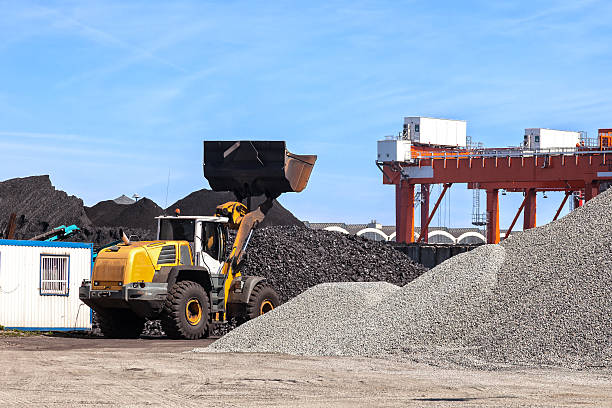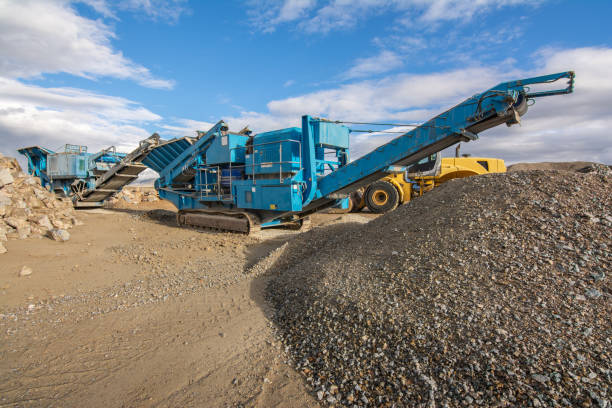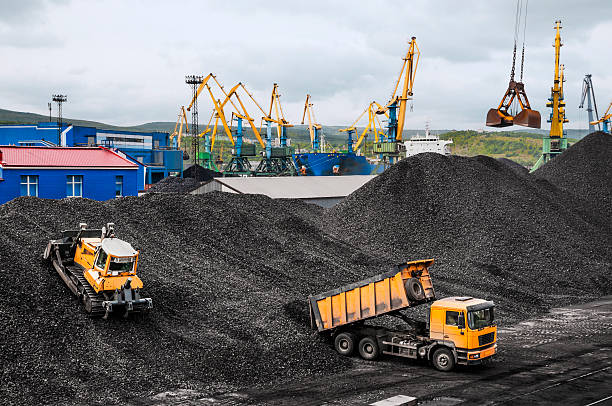Optimal monitoring with unique fire alarm (fire detection and early warning)
Coal storage yard
Coal storage yards are areas used for storing coal and are commonly found in industrial sectors such as power plants, steel mills, and chemical plants. Temperature monitoring and control in coal storage yards are crucial for ensuring the quality and safety of coal.
During the coal storage process, spontaneous combustion of coal is a significant safety hazard. When coal is exposed to air, oxidation reactions can occur, generating heat and releasing harmful gases, leading to coal self-ignition. Additionally, factors such as coal density and humidity in the storage piles can also affect the heat generation properties of coal.

To ensure the safe operation of coal storage yards, it is necessary to monitor the temperature in the coal storage areas to promptly detect potential temperature anomalies and self-ignition risks. This enables operators to take appropriate measures such as cooling, ventilation, and humidification to mitigate the risk of self-ignition and maintain the quality of coal.
Distributed fiber optic temperature sensing technology can provide a high-precision and real-time temperature monitoring solution suitable for the monitoring requirements of coal storage yards. By deploying fiber optic sensors in the coal storage yards, temperature changes in the coal storage areas can be monitored in real-time, and temperature data can be transmitted to a monitoring system for real-time analysis and recording.
Using distributed optical fiber temperature sensing technology, early signs of coal self-ignition can be detected, and measures can be taken in a timely manner to reduce the risk of self-ignition. In addition, the temperature distribution in the coal storage area can be monitored, helping to optimize stacking methods and management strategies to improve the safety and efficiency of the coal storage yard.
Distributed optical fiber temperature sensing technology can provide reliable solutions for monitoring in coal storage yards.
Monitoring solution:
Fiber deployment: Install distributed optical fiber sensors in key locations of the coal storage yard, such as the coal stacking area, conveyor belts, and storage bins. The fiber can come into contact with the surface of the coal or the surrounding environment to sense temperature changes.

Fiber connection and data acquisition: Connect the fiber sensors to the monitoring system to ensure real-time data acquisition and transmission. The optical fiber signals can be digitized and processed through fiber equipment and interfaces.
Real-time monitoring and data analysis: The monitoring system can continuously monitor temperature changes in the areas connected to the fiber sensors. Temperature data can be analyzed and recorded in real-time by the monitoring system, allowing operators to understand the temperature distribution and trends in the coal storage area.
Temperature warning and alarm: Based on the safety requirements and preset temperature thresholds of the coal storage yard, the monitoring system can be equipped with temperature warning and alarm functions. Once the temperature exceeds or falls below the set thresholds, the system will trigger warnings and alarms to notify operators to take appropriate measures in a timely manner.
Remote monitoring and control: The distributed optical fiber temperature sensing system can be connected to a central control room or remote management platform, enabling remote monitoring and control. Operators can access temperature data through remote terminals, monitor temperature changes in real-time, and take corresponding actions when necessary.
Data logging and analysis: Temperature data can be logged and analyzed over the long term, facilitating the generation of reports and trend analysis. This helps optimize coal storage management strategies, improve process control, and enhance the safety and efficiency of the coal storage yard.

By implementing distributed optical fiber temperature sensing technology, the coal storage yard can achieve real-time monitoring and control of temperature, detect potential self-ignition risks in advance, and ensure the quality and safety of the coal storage process. This contributes to the reduction of accident risks, improved operational efficiency, and lower maintenance costs.
PREVIOUS:New energy battery compartment
NEXT:Coal mine safety





